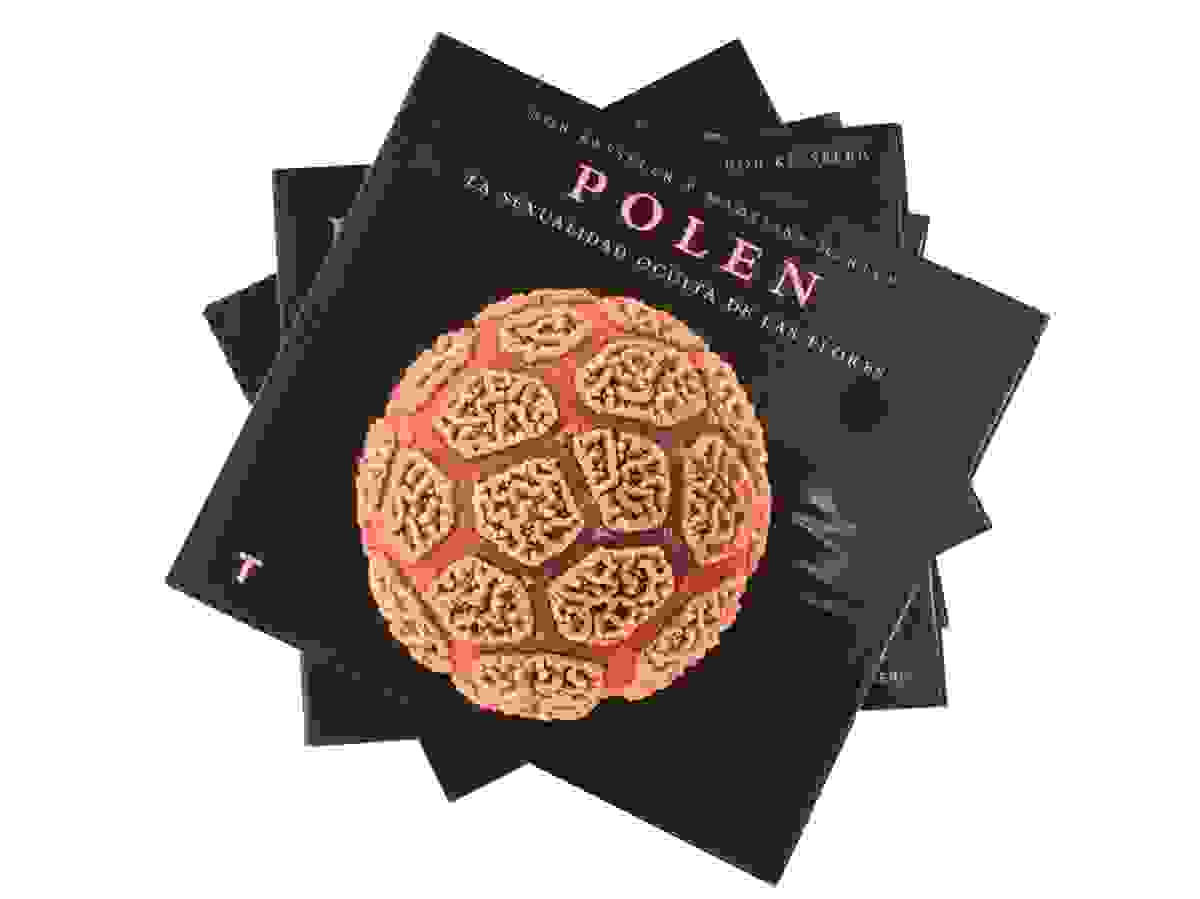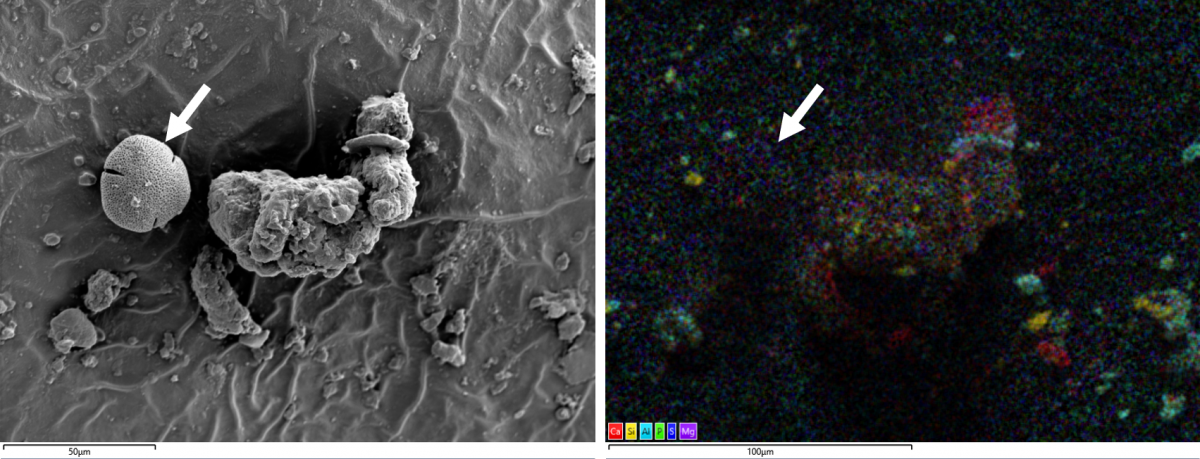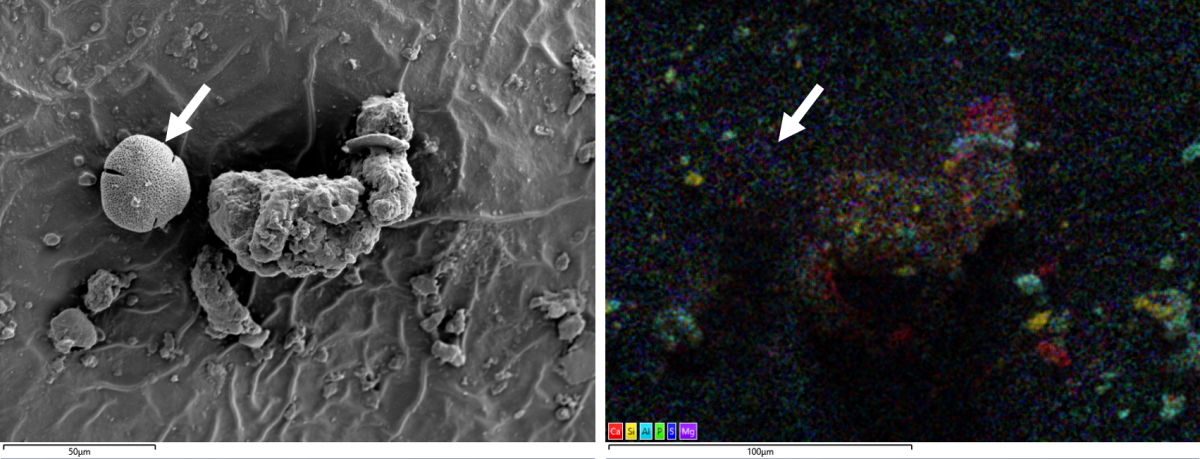Science from the artistic perspective
Rob Kesseler, widely known for his publications and artwork featuring pollen grains and seeds, has been working with with Dr Louise Hughes (Life Science Product Manager at Oxford Instruments NanoAnalysis) in an ongoing project involving air pollution around the globe. They recently released a webinar on the subject, and whilst Rob was with us, we had the fantastic opportunity to discuss his history and ongoing research with Louise. Have a read!
Please tell us a little about yourself, your background and what brought you to combine art and microscopy?
I’m Rob Kesseler, I’m a visual artist, and I’m also currently Professor of Art, Design and Science at Central Saint Martins which is part of the University of the Arts, London.
I think throughout my career I’ve always worked from the living world in different ways. At the end of the 90’s I became aware of looking at microscopic images, partly because I had a microscope as a child, and I thought ‘no one is really using these as a creative source’. I wrote into the laboratory at Kew Gardens asking if anyone wanted to collaborate with an artist on a project and I got just one reply, but that was the magic bullet! That was from Madeline Harley, a palynologist (pollen specialist). She had an early career as an interior designer, so she really appreciated the quality of the images that she was getting. She [Madeline] invited me in and showed me her electron-SEM images and they were just fantastic. Really, as an artist they’re quite intriguing sculptural forms but also ornamental, and something that I hadn’t seen in such a clarity before.
Madeline trained me up on the microscope and quite quickly I was up and rolling and able to start producing images. We did a number of small projects together, and then one big project for which I was awarded a NESTA fellowship. That gave me three years funding to continue working at Kew. Out of that I did a book together with Madeline, big 270-page book. It’s a popular science text all about pollen – it’s all my images of many different samples to explain what happens and why/where, also some essays on the history of botanical illustration and scientific imaging. It went global. This was 17 years ago and is still in print in 8 different languages. I then went on to do another book on seeds and modern fruit with Wolfgang Stuppy, a seed morphologist at the Millennium Seed Bank.

Can you tell us a little more about this project that you and Louise are currently involved with?
I got to know Louise Hughes when she was at Oxford Brookes [University] running the microscopy unit up there, and I was doing some work with Chris Hawes. I brought some art and design students up to do a short microscopy course and Louise was fantastic. Our paths kept crossing more and more over the years. It’s really great to have this opportunity to work with her.
I think over the years I’ve built up a nice collection of powerful images and more recently I’ve been aware of what happens next, what is the next challenge and how can these be used in different ways. I had a challenge from my head of college who said:
‘These are fantastic images Rob, but what can you do with them next?’
A project fell into my lap with the BBC. They wanted to do a project on the seeds of plants that would be useful in the future due to climate change. Shortly after that I met Louise at the Botanical Microscopy Congress and she was super excited about her new EDS technology and started telling me about its capabilities and showing me the images, and I immediately though ‘I can see this working’. I have a studio in Greece, my wife is Greek, so we often travel back and forth, and I can collect specimens on route. So I started with leaves collected in the Garden Museum next to Lambeth Palace which is very near where I live, and really, is quite a polluted area, and I knew I would be going to the mountains in the Greek Peloponnese so that was my end point. It involved mapping, both regional mapping and also micro mapping of surfaces.
Sounds very exciting, so what made you decide to use electron microscopy?
So, as I mentioned, I have a lot of experience from over the years of using scanning electron microscopes, mainly at Kew. They give such super resolution, such clarity and reveal such minute details that are so intellectually challenging and ‘what is it that we’re looking at’, so I’ve become quite experienced at that now. This was a new venture which brought in electron microscopy, but with the EDS it was giving a very different kind of image which is an interesting challenge for me… how to translate that material into a personal piece of work which isn’t just a scientific piece image but nonetheless comes from a scientific context. It seemed a perfect fit for me.
Were there any results that surprised you?
Well first of all the stunning images, but there were several things that came out… we were looking at a pollen grain, and under EDS you can select out different elements – and it [the pollen grain] disappeared because it was so similar to the background. It had the same constituents, so the form disappeared – it really raises questions about what one is looking at, and fidelity within photography and the digital pixel. Which was really revealing. Today, I hadn’t quite understood before how you ascribe different colours to the different elements, I’d assumed you went along with a certain palette with the periodic table – but that also fundamentally changes the nature of the two images. That has a lot of potential, it asks questions about science – why do you choose those colours? ‘Leaves are green so we put a green colour on there’.
Also, the amount of stuff on the surface really, it’s unmissable.

I can imagine. In your opinion, what are some of the wider implications that this project can have in terms of health and the environment?
I think for health and the environment, it’s a bit scary – but you don’t want to scare people, you want to inform them, you want to inform them in such a way that might change behaviours. There are many ways of doing that. I suppose, as an artist I work with the best tools I have. I’m not a politician, I’m not going to stand on a soapbox. So, I have subtle ways of change and contributing to that conversation both externally and my role as a professor at the University. We have a very receptive audience of students who are well aware of climate change. We talk a little bit in the webinar about the proliferation of images from the science world within a popular medium. They’re used fairly indiscriminately, the number of virus images put up partly to scare. We need to use them in a more informed way, it’s about trying to create a more informed audience.
The recent webinar Art, Science, Microscopy and EDS is available to watch on demand. If you were as inspired by our talk with Rob as we were, then go and register now to find out more about his project with Louise.






